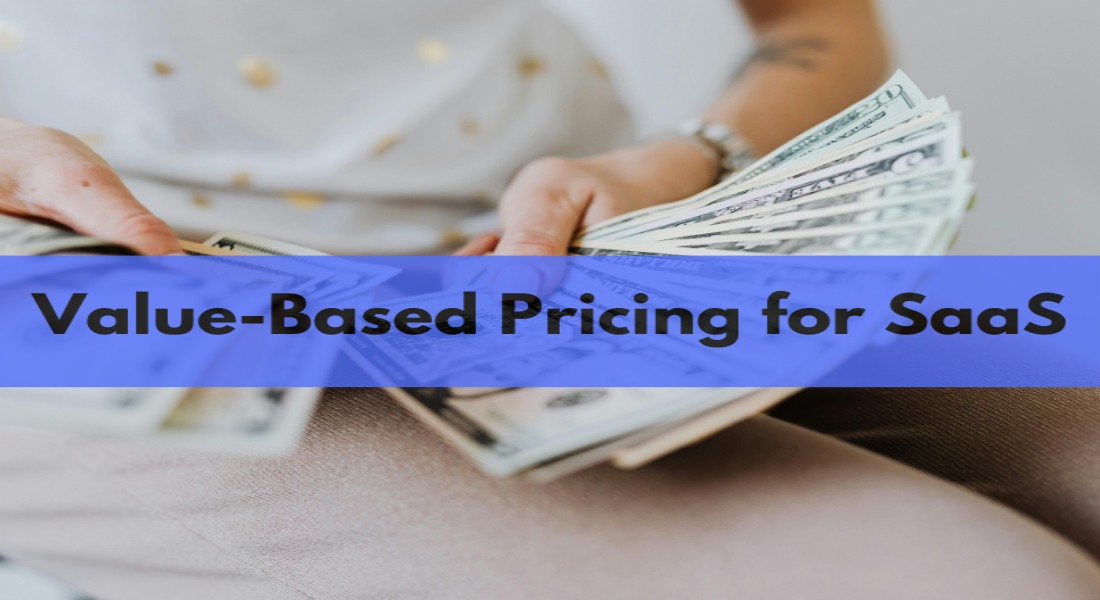
When deciding how much to charge for your service or product, value is king. The term “value-based pricing” refers to pricing goods and services that emphasize how much customers value them rather than on factors like production costs or market competition.
Using this method, you can learn how much your product or service is worth to your target audience. You can charge more for your solution if you know how much value it provides and can put a price on it. Value-based pricing lets you charge what your product or service is worth to make the most of your unique selling points.
Apart from merely increasing costs, when did you last give your SaaS pricing strategy a complete evaluation? Unless you’ve made significant changes to your business strategy, you likely have not reviewed your pricing strategy since the planning stages before your company’s launch.
If you want to maximize profits and set yourself up for success, choosing the correct price plan is critical, whether you are an experienced SaaS provider or just starting. Your SaaS company must embrace value-based pricing in today’s fast-paced digital market.
This article will explain how value-based pricing can revolutionize your business. This approach highlights the need to set prices that reflect the perceived worth of your service to clients.
Value-based pricing is a calculated strategy for determining how much to charge for your business’s goods and services. Conventional pricing approaches include applying a markup, accounting for labor and production costs, and using a one-size-fits-all price approach. These approaches may be practical for tangible products like apparel or a treadmill, but they need to be more for the dynamic domain of software.
Products and services in the SaaS (Software as a Service) sector are constantly changing, and continuous updates and enhancements are a crucial component of the offering. In this situation, using traditional pricing techniques may result in undervaluing your service.
Software firms can charge customers according to the perceived worth of their product by implementing value-based pricing. That is all there is to it. But the hard part is figuring out exactly how valuable your customers think your product or service is. If you overcharge, you risk losing business; if you undercharge, you forfeit money.
For instance, a project management tool’s cost might be determined by its benefits, such as improved job tracking, faster communication, and enhanced team efficiency. In a similar vein, the price of a marketing automation platform may be determined by the value it provides in terms of nurturing, lead generation, and conversion rate optimization.
The secret to effective value-based pricing is a deep understanding of your target market’s problems, obstacles, and goals. You may choose pricing that accurately represents your product or service’s value to your clients by measuring its impact on these areas.
Your software’s value is directly proportional to the number of users it has. A business with five active users will not be able to compete with one with five thousand active users.
A customer conducting research will find a clear winner if they look at the number of people flocking to one SaaS provider over another. Prospects will see the company with five active users as less valuable, regardless of their advantages, such as superior customer assistance.
Consider your platform’s potential user acquisition costs when you develop your value-based pricing strategy. You may have a deal where a firm may save money by buying additional tickets. Alternatively, increasing the number of users may grant them access to more storage features or interfaces with partner platforms.
Think carefully about how you may segment your offerings to attract additional customers. Your SaaS business will benefit from your sheer numbers.
Enhance the worth of your products by offering a more comprehensive range of integrations, enabling users to streamline their tasks, cut costs, reduce effort, stay up-to-date, and minimize stress. Our utmost focus is on enhancing the customer’s experience. Consider increasing the price of your platform, as it offers significant added value.
For example, if you have a SaaS product related to a bulk order app on Shopify, you can seamlessly integrate it with another SaaS product to enhance customer interaction. This integration can prove advantageous for both applications. Combining it with a subscription or currency converter app could be suitable in that case.
Finally, the value of software increases as its features and capabilities allow users to do more. Demonstrating the features, their functionality, and the benefits your system offers can be challenging.
The ‘freemium’ model is a simple technique to increase product value. After that, you can introduce more levels of paid pricing.
Features and capabilities become available at higher pricing points. The next tier may provide live, round-the-clock service, whereas your free tier allows email support during certain hours. Tier two suddenly becomes significantly more valuable due to this functionality.
Remember to do frequent pulse checks or short surveys to gauge customer satisfaction with your features.
How often do they use the aspects that they like? Regarding your SaaS company, what functionalities do people wish you offered? Listen carefully to user input and incorporate it into your service to improve it. Consider your company’s business model in light of these three factors and assess it accordingly. They complement each other perfectly.
Your company’s worth is directly proportional to the number of users you attract and the number of services and integrations you offer.
Also, one way to boost sales is to demonstrate the value your product provides to clients.

If you have demonstrated that your customers are willing to pay a premium, you can begin with a higher price point. As you become more knowledgeable in your field, you can consistently enhance your product and incorporate new functionalities, allowing you to adapt your pricing accordingly. Implementing a competitor-based pricing method would mean replicating your competition’s strategies.
What if they should have done their due diligence and offered higher prices? You may be sacrificing potential revenue if you fail to differentiate your prices. Maximizing your earnings involves focusing on your primary source of income: the customer. Furthermore, it is crucial to regularly reassess your pricing strategy every six months as your company and product offerings continue to develop.
Collecting willingness-to-pay data requires a dedicated effort, but the results are worth the investment. Once more, willingness to pay refers to the highest price a customer is prepared to pay for your product or service. It depends on several factors, but it is an excellent method for understanding the overall demand at any given time. With the expertise of a specialist, the research behind a value-based pricing strategy offers concrete data that compels you to set a price that generates profit.
Understanding your customers’ willingness to pay for your product or service is crucial for developing a solid and competitive pricing strategy. With expertise, you’re making assumptions.
You can find out what consumers need if you think about your features and products from their point of view. Thinking like an expert will help you develop new ways to improve your items.
To take your items to the next level, you need to think of ways to improve them and find places to sell more of them. Adding more features to your service can boost your revenue and give clients a more engaging experience.
Customer satisfaction is prioritized through value-based pricing. Customer data for value-based pricing is typically gathered through customer feedback, surveys, and interviews.
Providing this level of attention to the consumer is expected to enhance the relationships with your existing customers. By demonstrating expertise in your field, you’ll be able to understand better and cater to their needs, earning their appreciation for your dedicated assistance. Building rapport is crucial for increasing retention and reducing churn.
Market segmentation is a strategic approach that categorizes prospective clients based on distinct measurements, demands, or descriptions. Subsequently, you analyze each segment to identify their areas of dissatisfaction, most advantageous scenarios, and the cost they are willing to allocate for your Software as a Service (SaaS).
Product scarcity refers to the availability of a product in relation to its demand. Typically, a sense of limited availability creates the perception of increased worth and can provide a rationale for higher prices. Recognizing and even cultivating scarcity can be beneficial for your pricing strategy.
If your SaaS stands out from the competition, or if only a few software companies offer similar services, there is a sense of scarcity in the market.
Product differentiation sets your product apart from others in the market. Regarding a SaaS company, various factors contribute to product differentiation. These include features, design elements, availability, ease of use, customization, and more.
When utilizing value-based pricing, the presence of distinct product features that set your software apart from competitors can influence customers to be more willing to pay higher prices or tolerate inconveniences to gain access to your product. Having a unique product can create a sense of scarcity.
The value-based approach is a powerful tool for SaaS companies in the challenging environment of profit maximization and fruitful competition. By identifying the value you create for customers and focusing on that, you can charge a price that reflects the actual benefit of your solution. This is done by analyzing the target audience and adequately conveying your product’s distinctive advantages. If you last evaluated your pricing policy a long time ago, try adopting the value-based pricing model to unleash the true profitability of your SaaS venture.
Attracting and retaining business customers is a challenging task. In B2B, you’re not just selling a product but forming a partnership that might last years or even decades. With more
Does your company’s cash flow issue need to be fixed? Or are you looking to reduce debt or grow your business but need more cash? Then, the best strategy to increase your cash flow is to focus
In volume pricing, the price per unit drops as the purchase quantity rises. Many companies, both in the wholesale and retail sectors, employ this tactic to increase product sales. Merchants can boost
When deciding how much to charge for your service or product, value is king. The term “value-based pricing” refers to pricing goods and services that emphasize how much customers value
If you restrict your marketing to a local audience, you will fail to take advantage of the global reach that the subscription-based economy offers. Consumers prefer to shop locally and use their